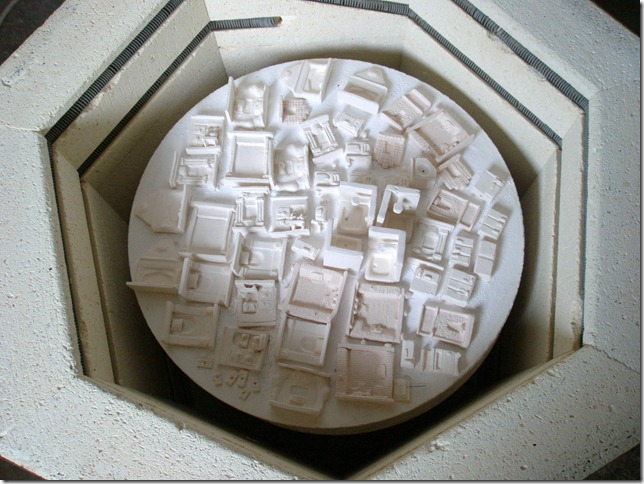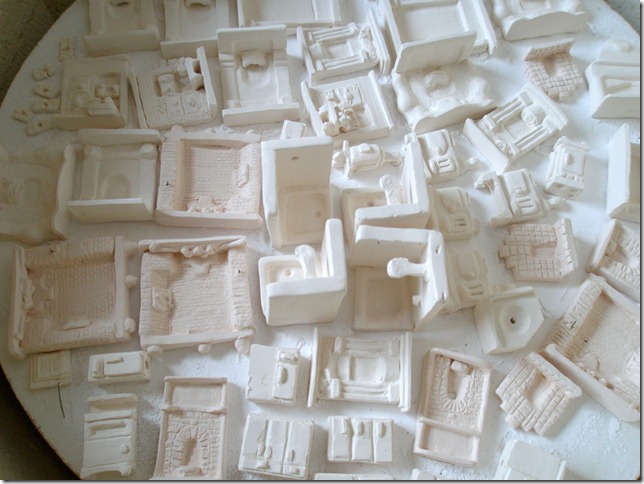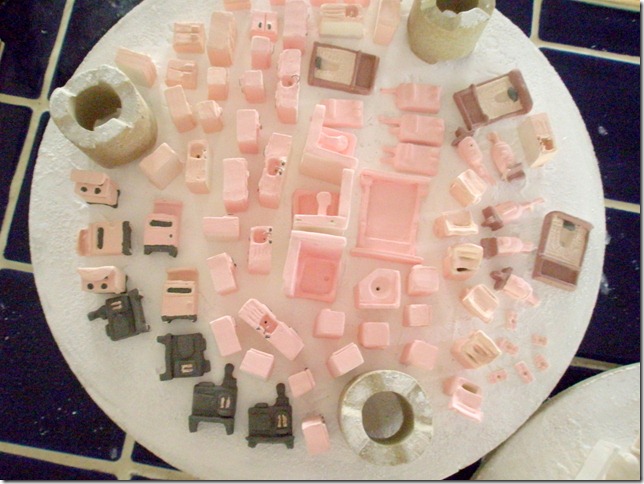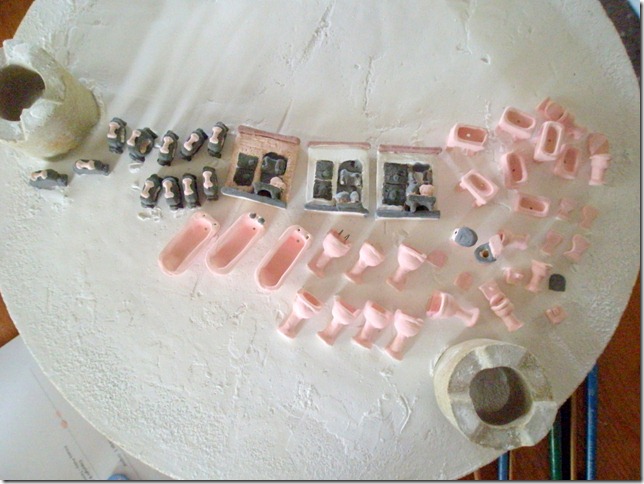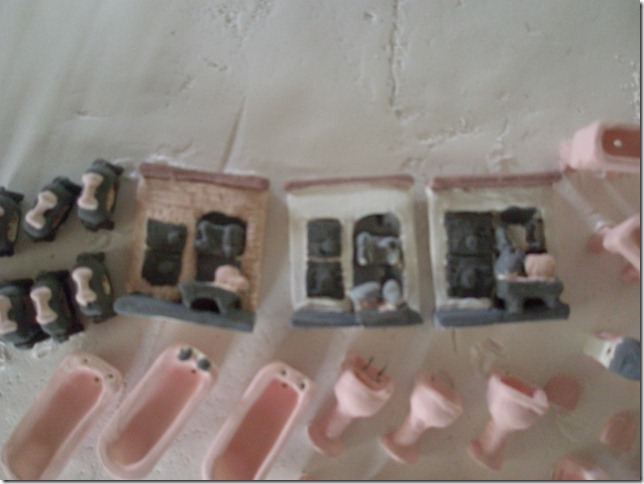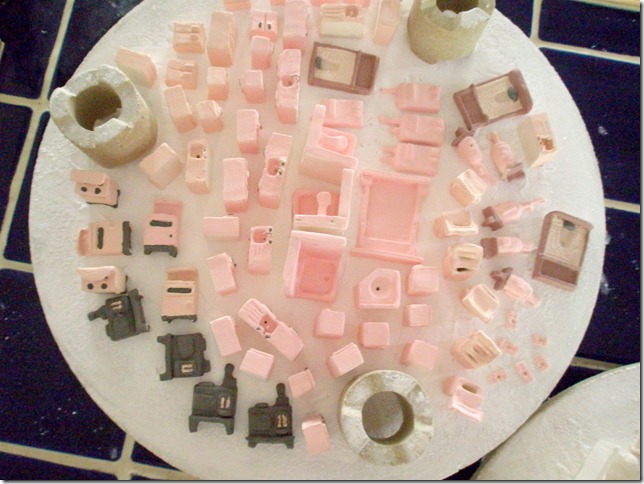If you’re waiting for a vampire to show up he’ll be back shortly. Meanwhile, if you’re not out shopping for garlic, I thought you might like to see this.
This is the kiln loaded for the first firing of all the new 48th scale things that are not dolls. A couple of the moulds will have to be remade. I was hoping that I could get away with a two piece mould for the kitchen sinks but they didn’t work well at all, so I’ll have to make new models and moulds and I need another base cupboard. It seems whether it’s my one scale kitchen from last year or the 48th scale ones – fitted kitchens are a right palaver.
There’s other stuff in there too and there are four layers in there; like a closer look?
The shower cubicles in the middle have proved a trial; they’re very difficult to clean without knocking off the shower head. The electric cooker hoods have been tricky too. The washstand is rubbish and the corner copper is a bit too small. This is only the first firing. In the first firing the kiln reaches a lower temperature – it was only on for two hours, but the pieces turn to bisqueware. Before firing they look and feel like chalk. After a bisque firing, apart from the obvious difference, that they have shrunk slightly, they sound more like china. That is to say if you banged a couple of pieces together, but don’t, they would make a slight chinking sound, just before they shattered.
Having got this far I am spending my nights and days doing the glazing.
I have not gone bananas and decided that pink power is the way to go; the clear glaze has a dye in it which disappears when fired, so that you can tell which bits you’ve done already. If it was invisible then stuff you’d glazed would just vanish, obviously.
The stuff that looks black is really risky, I’m hoping it will come out looking like metal. The several different coloured bits are risky too; will the colours stay put or will they run into each other? Probably a bit of both.
Some things are risky, some, like the fireplaces in the middle are really risky.
There’s different brands of glaze and fireable colours on the one piece here and I’ve used them all on the only three pieces that came through all the processes this far. Anything could happen.
In the history of ceramics in the UK, some of the early factories that made the pieces that turn up on the Antiques Road show for ludicrous prices are only known by their wasters. Wasters are the bits of fired ceramics that go horribly wrong. As you can now appreciate, anyone who is a bit inventive risks making wasters. In my early porcelain career I had entire weeks where I made nothing but wasters. The reason that wasters can identify a factory is what you do with the wasters when you’ve made them. I used to break mine up and use them to crock garden pots as a layer of drainage in the bottom. Now I use the expanded foam packaging nodules because they are warm and biodegradable eventually. In the eighteenth century factory wasters were taken out of the kilns, no doubt to the accompaniment of deep sighing, same as today, and chucked in a heap in the yard. Eventually living and junk and detritus forced them to the bottom of a heap and under accumulated layers of soil until, many years into the future, builders digging foundations discover a layer of broken and misshapen china and know that they are on the site of a long lost factory. The Bow factory in London which was in operation from the 17th century to the late 18th was discovered by its wasters. If you found a waster from an early factory it could be worth a good bit of money.
I seriously doubt that my wasters will ever merit anything other than the attention of a hammer. Nevertheless I shall continue with them because the finding out is such fun. This is not the final firing. Once those that survive the next, glaze, firing have cooled and been retrieved, they still have the details to be china painted.
I don’t think I’ll ever make the fortune that Thomas Frye, the inventor of the china clay body that made Bow porcelain, made, neither do I think I’ll be as famous. He was a considerable inventor and such a worker he only lived to 52. But it is thanks to people like him that people like me can make things like this
for you.
~~~~~~~~~~~~~~~~~~~~~~~~~~~~~~~~~~~~~~~~~~~~~~~~~~
JaneLaverick.com- standing on the shoulders of giants.

